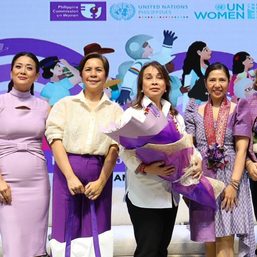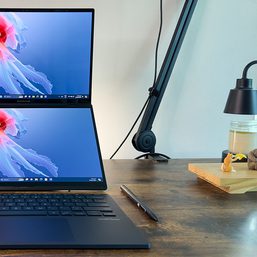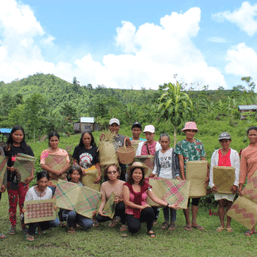SUMMARY
This is AI generated summarization, which may have errors. For context, always refer to the full article.

Editor’s note: This press release is sponsored by Grab and was handled by BrandRap, the sales and marketing arm of Rappler. No member of the news and editorial team participated in the publishing of this piece.
According to the Tech For Good Institute’s Platform Economy Report, Filipino micro, small, and medium enterprises (MSMEs) comprise 36 percent of the national GDP and employ 63 percent of the population. Despite their contributions to the economy and sheer number, there remains an undeniable gap in their access to financial tools and support, keeping them from growing – in fact, 79 percent of MSMEs cite a lack of working capital to maintain their business.
And while we might not be able to realize it, transacting with MSMEs is something we most probably do on a daily basis. From food to everyday services, they truly are the backbone of the economy – so why do they continue to remain underfinanced and unbanked?
Luckily, there are ways to provide them the growth and financial opportunities they need. This is what Grab Financial Group Philippines Head of Lending Erwin Yamsuan touched on in his piece in partnership with the Official Monetary and Financial Institutions Forum.
But first, where do the issues lie?
In order to identify the opportunities for MSMEs, it’s crucial to pin down what is keeping them from growing – simply put, there are structural gaps that keep them from effectively lending.
This is especially felt in the traditional bank lending market. Yamsuan shares that only 4.8 percent of MSMEs obtained bank loans during the pandemic – a small number considering the definitive increase in small businesses throughout this period. Further impediments are seen by the fact that more than 15 percent of cities and municipalities in the Philippines lack any sort of banking presence, according to a report from the Bangko Sentral ng Pilipinas.
Apart from these, administrative and credit assessment processes and lending requirements made mandatory by banks don’t only add to the strain – it also takes more time for MSMEs.
With such barriers in place, it is then clear to see why MSME owners find it difficult to access financial services, especially physically. From here, a domino effect is seen: With a lack of access from the get-go, MSMEs then are kept from securing loans and building up their credit scores. This results in others not getting the support they need, and others having to resort to illegal funding sources.
But effective lending doesn’t have to end with physical spaces. After all, the space for digital online lending is growing quickly and steadily, too.
A fighting chance for MSMEs all over the country
This is where Digital Finance Service (DFS) providers enter the picture – of which Grab Financial Philippines is a part. There are many key perks in tapping DFS providers, notable of which is how it not only allows for digital lending – but how it makes credit much more easily accessible to businesses.
Another benefit is their ability to leverage big data, from customer reviews to income flows, which is lacking in traditional lending. With this ingredient, DFS providers are empowered to build alternative credit scoring models and loaning systems personalized to the different needs and abilities of MSMEs.

These are strategies that Grab Financial Philippines has already actively started working on. Through Quick Cash, its loan service program, GrabFood and GrabMart merchants can now easily apply for a loan; tailored loans as well as automatic daily micro-deductions are put in place to allow Filipino MSMEs to better keep track of their cash flows. The same is being done by Grab in Thailand, wherein approximately US$85 million has been loaned to 18,000 MSMEs.
Of course, while DFS providers are one step closer to realizing financial inclusion for our MSMEs, support will not be as strong without public-private collaboration. Yamsuan goes on to share that for digital lending to scale responsibly, the inception of the National Strategy for Financial Inclusion would be a good step in the right direction and enable policymakers and DFS providers to work together towards an inclusive, sustainable lending ecosystem.
While securing loans and other means of financial support were traditionally difficult, it is a challenge that digital lending now aims to eradicate. Now more than ever in a world in the midst of post-pandemic recovery, everyday entrepreneurs have the opportunity to thrive and grow. With DFS providers such as Grab Financial Philippines dedicated to helping our small and local businesses, the door is now wide open – and is very ready and ripe for change. – Rappler.com
Add a comment
How does this make you feel?











There are no comments yet. Add your comment to start the conversation.